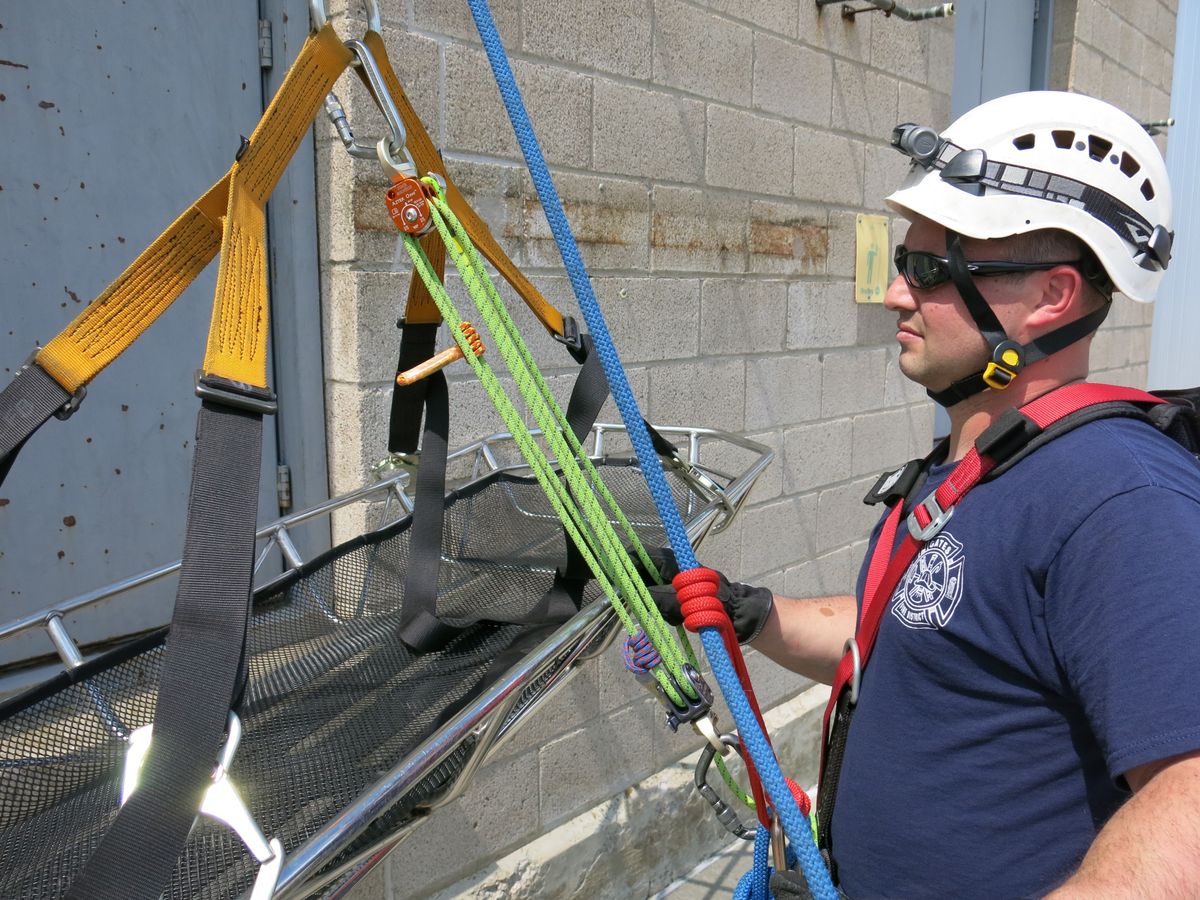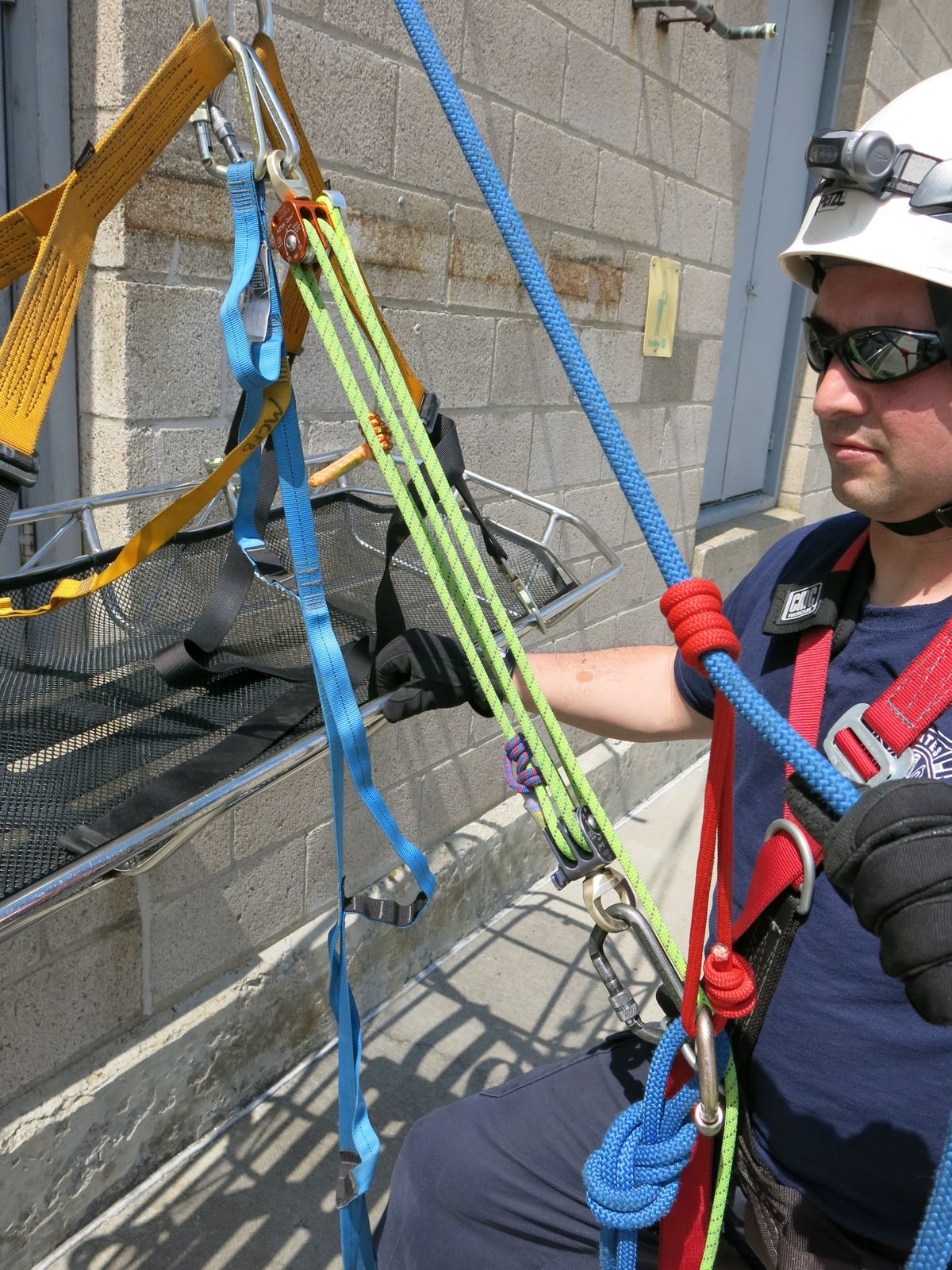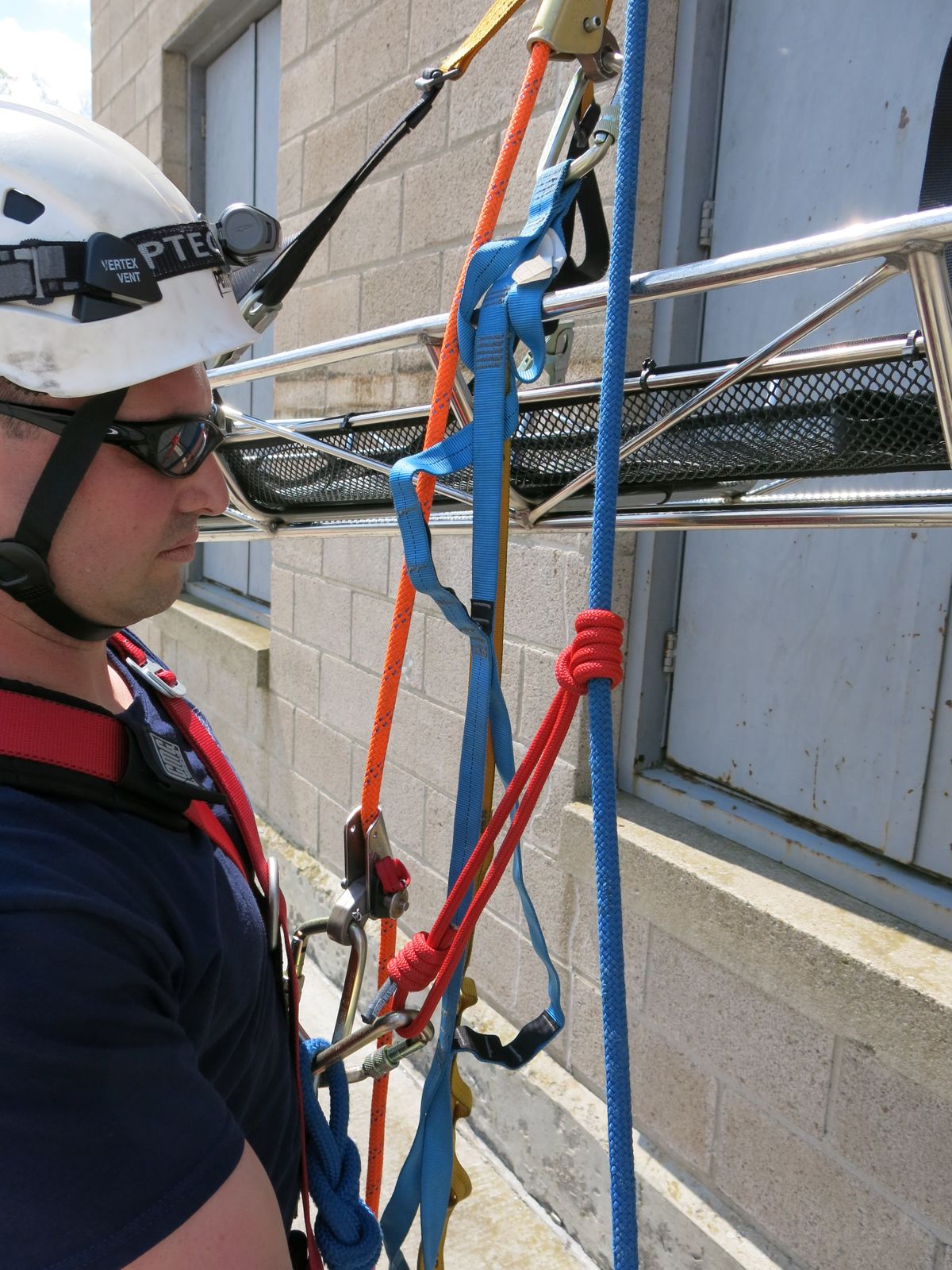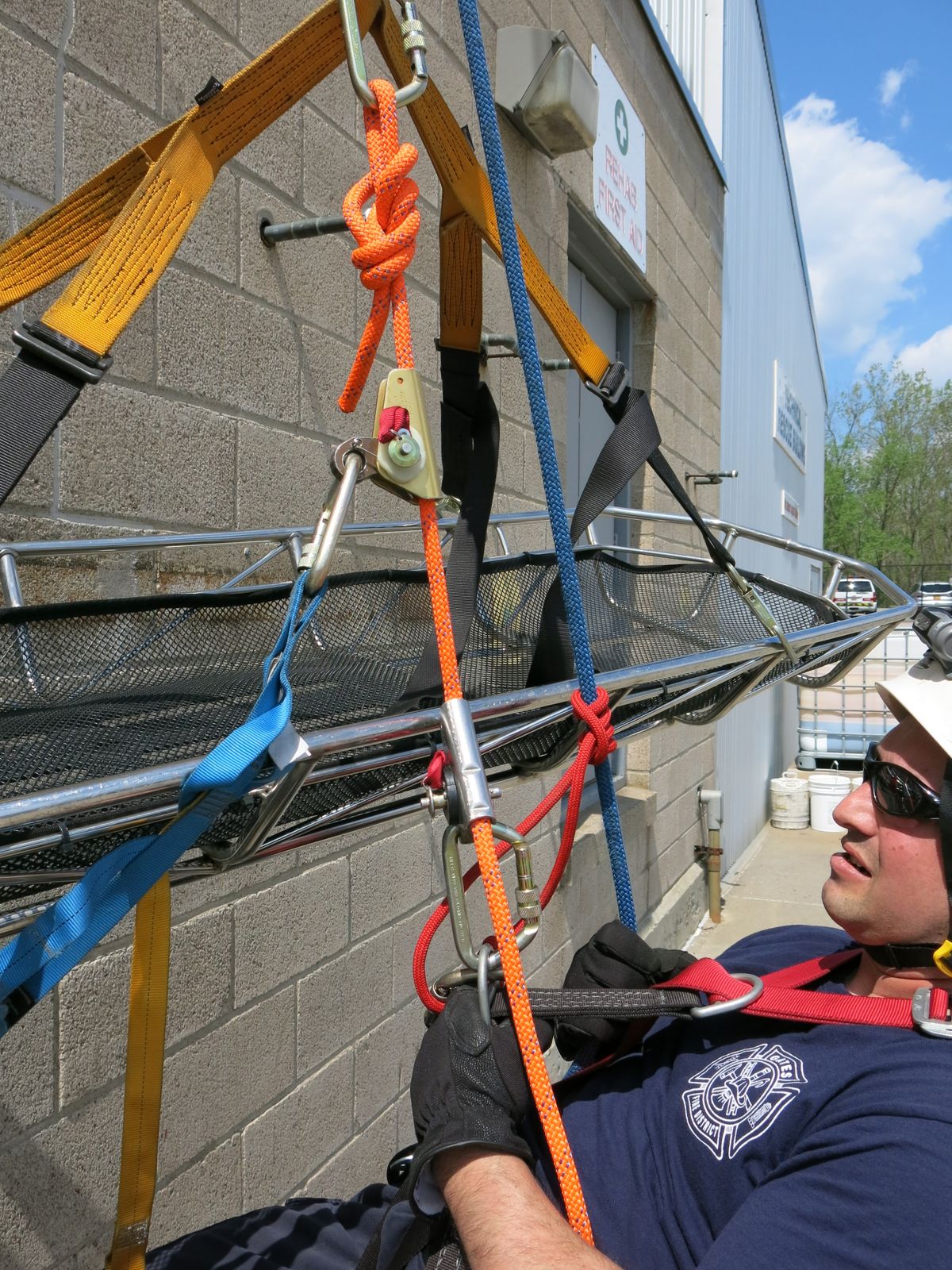The rope rescue component of the technical rescue family has evolved at a rapid pace over the past 10 years. With the influx of new technologies in all facets of rope rescue, adaptation and implementation has not always kept up with the needs of our responders.
All levels of operation and training from the individual department to state-level training programs must do their part in keeping up with the times. Having new and many times safer options available to the first responders, but not utilizing them, is not being a good steward of our industry.
I am not advocating that every time something new appears in a catalog that you run out and change your programs. However, the innovations that do come along which enhance the rope rescue capability both operationally and safety-wise have to be adopted.
Safety has to be our paramount focus with any system we use. The new equipment available provides levels of safety that were never even thought of a short time ago. Any device that defaults to the safe or locked/non-moving mode is our best friend.
Most organizations that claim to do rope rescue “a lot” actually do it a very small percentage of their overall incident response. This is why implementing equipment that will be more user-friendly is our best tool for responder safety.
We also have to focus on the entire process when adding new devices to our cache of equipment. One area that we have changed over the past few years is utilizing a “set of 4s” which go by a number of names including “The AZTEK,” for our primary attachment of the attendant to a litter operation.
Attendant attached to litter using an AZTEK system. Note progress capture 6 mm prusik (purple) engaged at attendant’s attachment point. This keeps the progress capture prusik within Attendants reach at all times. (Photo/Bob Duemmel)
The AZTEK attachment method shown with the addition of an Etrier, which provides the attendant added maneuverability when tending to a victim in the litter. (Photo/Bob Duemmel)
Two examples of methods used previously are:
- Pick off strap (which provided limited capability for adjusting the attendants position once on the litter).
- Yosemite rig (which is a length of rope attached to litter/mainline with two ascenders, one attaching to the attendant and other for attaching an etrier for the attendants foothold).
Attendant attachment with Yosemite Line (orange) and Belay with Prusik take-up (blue). (Photo/Bob Duemmel)
Early on, the argument from those presenting these methods was that not everyone has the newer technologies therefore these old methods have to be retained. I fully agree that five to 10 years ago that was a correct statement. Today, if an organization is in the rope rescue game, then they have most likely grown with the times and are using these newer, safer and more efficient devices. Technical rescue cannot be lead down the path of “many years of tradition unimpeded by progress.”
Implementing change to rope rescue
Rope rescue programs are implementing many types of changes due to new technologies. Two of those changes – attendant attachment to the litter and belay options – are discussed here.
Attendant attachments to the litter
Some of the reasons for the evolution from a pick off strap to a Yosemite rig then to the Set of 4s for attendant’s attachment are:
- The pick off strap has a very limited travel range, which makes it difficult for the attendant to transition positions on the litter to assist the victim and to navigate challenging terrain.
- The addition of the Yosemite rig helped by allowing the attendant greater movement ability up or down the attachment line.
- Followed by the adaptation of the Set of 4s as our attendant’s attachment device, the attendant can now move up and down the system in an even more efficient manner.
Despite changing to the Set of 4s, one thing that has not changed in many rope rescue programs is the second means of attachment or the Belay line. Our initial method of attaching the attendant to the Belay line was to tie a figure 8 knot in the end of the rope and approximately six feet up the line tie a butterfly knot for attachment of the Belay line to the litter. This worked well with the pick off strap as the lengths were similar and travel distance was not a concern. With the addition of the Yosemite rig and the Set of 4s, this short tail on the Belay line becomes a hindrance to the attendant. The attendant can only travel as far as the shortest leg of their attachment lines, which in this case is the Belay line.
We utilize a work around for this which provides an extended length of the Belay line while maintaining the safety of the attendant. As an example, if the Set of 4s allows the attendant to extend out 10 feet, then it would only make sense that the Belay has to be of equal length.
To accomplish this task follow these steps:
1. Tie a single loop Figure 8 at the end of the Belay rope.
2. Extend the Belay line tail to the desired length (10’ for our example).
3. Tie a Butterfly knot in the belay line (remember to take the rope from the bag end of the line for this knot so that you do not shorten your belay tail by using the rope from the measured distance as a part of your Butterfly knot).
4. Attach the Butterfly knot to the litter next to the main line attachment on an independent Carabiner.
5. Place a single triple wrapped prusik loop on the Belay tail.
6. Join it to the carabiner on the terminal knot of the Belay line when attaching to the attendant.
7. Utilize the prusik to let out or take up slack in the Belay line depending on the attendants riding position.
This method allows the slack in the Belay tail to be adjusted whenever the attendant moves within the system. Keeping the Belay tail taunt minimized the fall factor in the event of a main line failure.
View of Belay with Prusik take-up (blue) loosened for positioning. (Photo/Bob Duemmel)
Attendant positioned below litter with Belay slack removed using Prusik take-up method. (Photo/Bob Duemmel)
Belay options
Early grassroots testing provided data, which indicated many of the methods used to belay a live load were not sufficient to safely arrest the load when the main line experienced a catastrophic failure.
Once again, new technologies have helped improve our safety levels when used as designed and with proper training. Devices like the Petzl ID provide one special capability that our previous generation of belay systems such as the Tandem Prusik Belay System did not; when something goes wrong, the Petzl ID defaults to a non-moving or locked mode.
With a Tandem Prusik system, there is a very real possibility that if not properly attended and adjusted that the belay line could travel through the system for a significant distance before any arresting of the line can take place.
A good practice to maximize the Belay operator’s ability to do their job no matter what type of device or technology is being used, is to allow the Belay operator to control the rate or speed of descent. If the Main Line is being deployed at a speed that the Belay operator cannot keep up with, it will either:
- Constantly lock up causing delays in operation.
- The operator, in the case of the Tandem Prusik Belay System, may loosen the prusik hitches so that the line plays out easier, which will compromise the prusik hitches ability to grab the line in the event of a main line failure.
I have touched on a very small percentage of the new technologies now available to first responders. Explore your options and remember the importance of initial training and refresher training in all rescue activities. The new technologies we enjoy today and the new items that will be available in the future will never replace responsible and dedicated training programs.


















